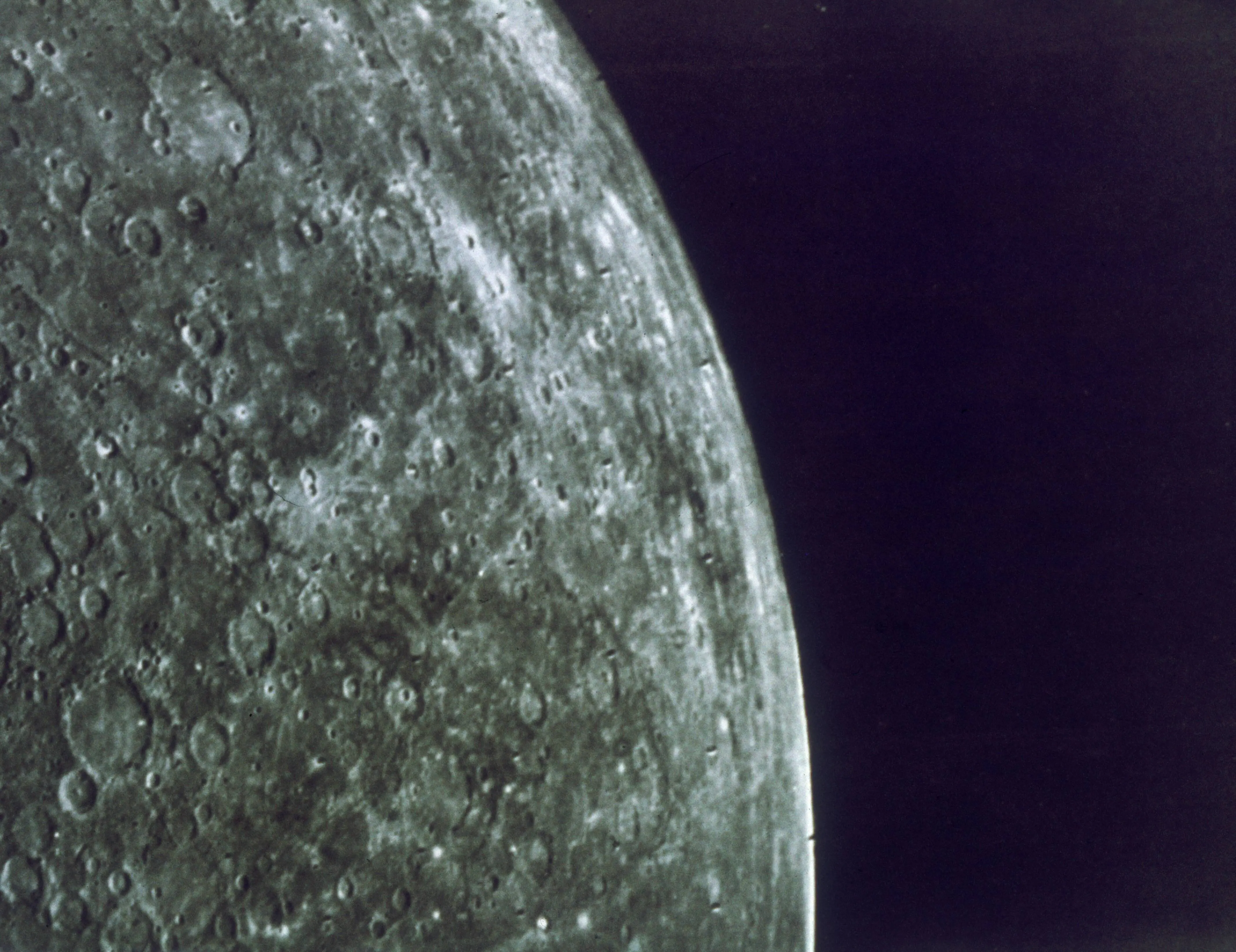Planet Mercury reaches its farthest distance from the Sun in Southwestern sky
-
 The surface of Mercury, as photographed by the Mariner 10 craft, circa 1974 (Image via Getty)
The surface of Mercury, as photographed by the Mariner 10 craft, circa 1974 (Image via Getty)On October 29, Mercury will reach its greatest eastern elongation, appearing at its farthest apparent distance from the Sun in the evening sky, as reported by Space.com and Starlust.org.
At 4:28 p.m. EDT (2028 GMT), the planet will be separated from the Sun by approximately 24 degrees, providing a brief window for observation after sunset.
Observers can find Mercury just over the horizon in the southwest at sunset. On the left, it is flanked by the stars of Scorpius, while on the right, it is flanked by the stars of Libra.
This is a rare occasion when the closest planet to the Sun can be spotted away from the Sun's intense glare, making it possible for people living in either hemisphere to find the planet during twilight hours.
Mercury reaches its greatest Eastern elongation in the Southwestern sky
Mercury’s orbital position and visibility
According to Space.com, Mercury travels around the Sun at a mean distance of 36 million miles (58 million kilometers). The planet faces a bright Sun all the time it is near the solar system, and consequently, it is hardly visible in the sky as it can only be seen for a short period of time shortly after sunset or before sunrise.
At greatest elongation, Mercury shows the furthest distance from the Sun in the sky, and when the point is located in the evening, it is called the greatest eastern elongation, as reported by Starlust.org.
This event on October 29 moves Mercury 24° away from the Sun, which is a typical elongation since the angles vary between 18° and 28°. Following this date, Mercury will be seen moving closer to the Sun and, hence, dimming and disappearing gradually over the next few weeks.
The planet will be very close to the horizon after sunset and, therefore, cannot be seen for more than 60 minutes due to its altitude of around 7 degrees above the horizon, according to In-the-Sky.org.
Observers should ensure that their view of the southwestern horizon is free from any obstructions to follow the planet. The low point on the horizon may also cause the light of the planet to fluctuate as it travels through Earth's atmosphere.
Mercury’s illumination will be around 63% during this elongation, with a disk size of 6.62 arcseconds for telescopic observation.
Observation guidelines
To view Mercury, observers can locate the planet above the southwestern horizon shortly after sunset, as suggested by Space.com.
The illumination of the world will be approximately -0.2 magnitude by the human eye, thus it will be a lot brighter than almost all stars visible in the nearby sky.
The phase of Mercury at this elongation is similar to that of a waxing gibbous, the right side being illuminated by the sun and the left one remaining in shadow.
The phases of the planet can be unveiled by scopes having apertures of four inches or more if the sky is dark enough, but stargazers must take the utmost precaution that the Sun is completely below the horizon before they resort to their optical instruments.
The October 29 elongation provides the best opportunity for Southern Hemisphere observers in 2025, as reported by Starlust.org, while in the Northern Hemisphere, cities such as New York will observe Mercury at a low altitude of 7 degrees above the horizon during sunset.
Mercury will be positioned in the constellation Scorpius, though its stars may be obscured by twilight. Other planets, including Mars at magnitude 1.5, may also be visible nearby.
Duration and future visibility
Mercury’s visibility is inherently limited due to its orbit closer to the Sun than Earth’s, as noted by In-the-Sky.org.
It is only possible to see the planet for a few weeks around its greatest elongations, which happen roughly every three to four months.
Following the event on October 29, Mercury will head to inferior conjunction, going between Earth and the Sun directly on November 20 at 5:00 a.m. EDT.
Mercury can be looked at with a telescope or binoculars, and an observer may also use an astronomy app that gives the exact location of the sky for that short period.
Stay tuned for more updates.
TOPICS: Mercury, Eastern elongation, Planet Mercury, Sun